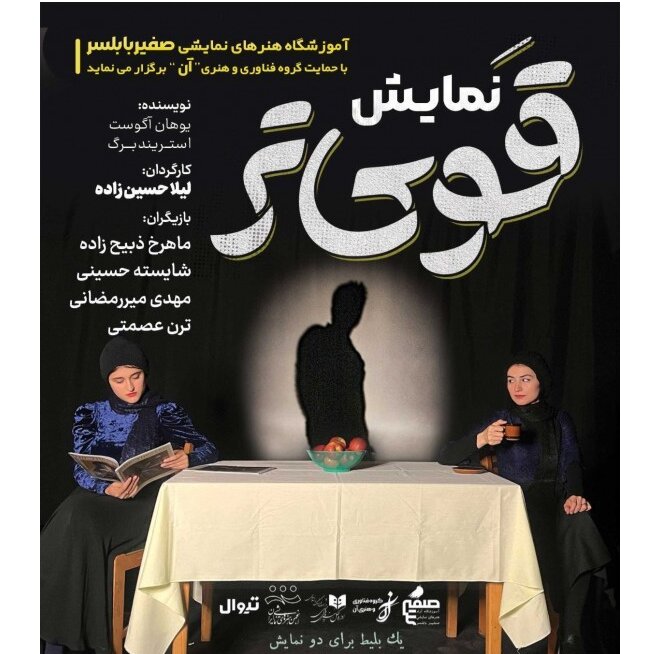Written by Tehran-August Strindberg and directed by Leila Hosseinzadeh, The Play “The Stronger” began its performance in Baborsal, Mazandara.
Mahrokh Zabihzadeh, Shayesteh Hosseini, Mehdi Mirramezani and Taran Esmati are participating in the cast.
“The Stronger” is a Swedish play from 1889, consisting of only one scene. The main character is two women. One is married and talking, the other is single and silent. They met each other at a cafe by chance, by chance, on Christmas Eve. This is the beginning of the story.
The audience, combined with the quiet response and physical activity of a married character, suggests many reactions and meanings through the oral reading of a married character. Their relationship involves an invisible character: a husband. The play is semi-autobiographical.
It explores the power struggles that are evident in human psychology, and stands up to the audience against the timeless themes of betrayal, affairs, and hierarchy that work in a male hegemony society.
The woman on stage represents a fragment of the heart of a character. Some parts are incapable of action and are controlled by the persona “agents,” while others are capable of speech and autonomy in the face of a climactic conflict of unstable relationships.
Stronger, the more universally thought of as a great monodrama of typical short plays and great psychological richness. The play is unique in that the husband, the subject of the discussion, never appears. In “Strengthier,” Strindberg shows the keen insights and observational abilities he possessed regarding human nature and its plot.
Of course, there is a rather open question as to which of the two women is stronger. A married actress who walks around everything, bends in the wind, survives in the dog-dog world, or someone who is bent and unbroken like a dry lead. But is her observation correct or hopeful thinking?
Strimberg (1849-1912) in August is Sweden’s most important playwright. He was also a school principal, journalist, scientific and political author, short story writer, poet, essayist and painter.
As a dramatist, Strindberg’s main strength is less than in dramatic techniques, like the trenches and search powers of human mind analysis. His main play is a very accurate and narrow view of the female soul. Some of his own domestic bitterness finds expression in his study of women in the plays. He really likes to show the power of one character more than another.
Strindberg is a prolific writer who often portrays direct personal experiences, and has written over 60 works in fiction, autobiography, history, cultural analysis and politics over more than 40 years.
Throughout the bold experimenter and iconoclast, he explored a wide range of dramatic methods and purposes, from naturalistic tragedy, monodrama and historical theatre to expectations for the dramatic techniques of expressionist and surrealism.
From his early works, Strindberg developed innovative forms of dramatic behavior, language and visual composition. He is considered the “father” of modern Swedish literature.
In addition to “The Stronger,” one important play for Strindberg includes “The Outlaw,” “The Countess,” “Creditor,” “Pariah,” and “Facing Death.”
“The Strong” will remain on the Black Box stage at Babolsar Culture and Guidance Department for a month until June 2nd.
SS/

